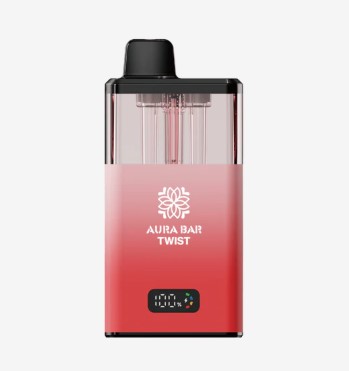In today’s fast-paced work environments, clear and reliable communication is essential for ensuring workplace safety. Two way radios have long been trusted by industries ranging from construction and manufacturing to hospitality and education. Their dependability, immediate connection, and resilience make them an indispensable tool for safety. Here’s a closer look at how two way radios enhance workplace safety and why every organisation should consider them for their communication needs.
1. Instant Communication for Quick Response
One of the greatest advantages of two way radios is the ability to communicate instantly at the push of a button. This immediacy is crucial in emergencies, where seconds can mean the difference between a safe or unsafe outcome. In situations where a phone call would take too long, or where cell service might not be reliable, radios connect employees instantly.
- Example: In a factory, if a piece of machinery malfunctions and poses a hazard, workers can immediately alert the safety team to shut down the equipment, preventing potential injuries.
2. Reliability in Challenging Environments
In many work settings, such as construction sites or large warehouses, cell phone signals may be weak or nonexistent. Two way radios operate on dedicated frequencies and are designed to work in locations where phones might fail. Most two-way radios are also built to be dustproof, water-resistant, and durable against drops, making them ideal for challenging work environments.
- Example: On a remote construction site, workers can stay in touch even if the area lacks cellular coverage, ensuring communication lines are always open.
3. Clear Communication Amidst Noise
Many two way radios come equipped with noise-cancelling technology, ensuring that critical instructions are heard clearly, even in loud environments like factories or concerts. This feature can be a game-changer for workers who rely on real-time updates but may struggle with the background noise from machinery, crowds, or vehicles.
- Example: In an industrial setting, safety announcements made over two way radios can be heard clearly, even when heavy machinery is operating, allowing workers to stay updated on important safety information.
4. Hands-Free Operation for Better Control
Two way radios can often be used hands-free through accessories like headsets and microphones. This feature allows employees to communicate without stopping their work or risking safety by diverting attention from critical tasks. For workers operating heavy machinery, this feature allows them to stay connected without compromising safety.
- Example: A forklift operator in a warehouse can receive updates or alerts without letting go of the controls, enabling better situational awareness and responsiveness.
5. Group Communication for Team Coordination
Unlike phones, two-way radios allow for group communication. This means an entire team or specific groups can receive important updates at once. In an emergency, supervisors can communicate with everyone in a given area to provide coordinated instructions, minimising confusion and ensuring a streamlined response.
- Example: In a retail setting during a fire evacuation, managers can use two-way radios to direct employees and customers safely, with all staff receiving the same instructions in real-time.
6. Emergency Features for Added Security
Many two way radios have built-in emergency functions such as “man-down” alerts, lone worker features, and emergency alarm buttons. These functions allow radios to detect if a worker has fallen or been inactive for a certain period and can automatically send alerts. Emergency buttons also allow employees to instantly notify supervisors in case of an accident or medical emergency.
- Example: A warehouse employee working alone in an isolated area can trigger an emergency alarm if they are injured, prompting an immediate response from nearby coworkers.
7. Enhanced Privacy and Security
In workplaces where security is a concern, such as healthcare facilities or government buildings, tw -way radios offer encrypted channels that prevent outsiders from listening in on conversations. This feature not only protects sensitive information but also ensures that safety communications remain secure and uninterrupted.
- Example: In a hospital, encrypted two way radios allow staff to communicate about patients’ locations and emergency plans without risking a breach in confidentiality.
8. Weatherproofing and Ruggedness for All Conditions
Many work environments are unpredictable, with employees potentially working outdoors or in extreme conditions. Radios designed with weatherproofing and rugged materials ensure they function reliably in rain, snow, heat, or cold. This durability is essential for industries like agriculture, landscaping, or public safety, where weather conditions can change rapidly.
- Example: During an outdoor event, staff can communicate easily with weatherproof radios, ensuring quick responses to weather-related hazards and maintaining the safety of attendees.
9. Facilitating Compliance with Safety Regulations
For companies in regulated industries, two-way radios can be an important tool for compliance. OSHA and other regulatory bodies require effective communication systems for safety in hazardous work environments. Two way radios fulfil these requirements and create a safer work culture by enabling swift communication.
- Example: In construction, OSHA guidelines require efficient communication channels. Two-way radios ensure compliance by facilitating clear instructions, warnings, and updates on-site.
10. Cost-Effective and Reliable for Long-Term Use
While smartphones might seem like an alternative, two way radios are generally more cost-effective for long-term use. Radios don’t require monthly data plans, and their battery life often outlasts that of smartphones, especially in high-use environments. This cost-efficiency allows organisations to invest in more units, ensuring that all employees are equipped with reliable communication tools.
- Example: A large manufacturing plant can outfit each employee with a two-way radio at a lower overall cost than providing company smartphones, maintaining clear communication channels without the need for recurring expenses.
Conclusion
Two way radios offer a unique combination of features tailored to enhance workplace safety in almost any environment. Their durability, immediate connectivity, and specialised safety functions make them a practical solution for improving communication, coordination, and response times in critical moments. For any organisation looking to enhance workplace safety, two way radios are an investment that not only boosts productivity but also provides peace of mind, ensuring that all team members stay safe and connected.





